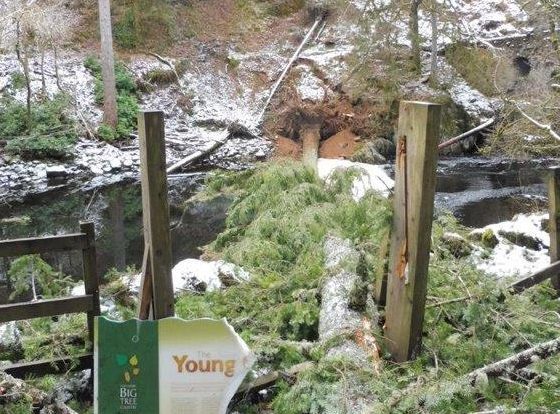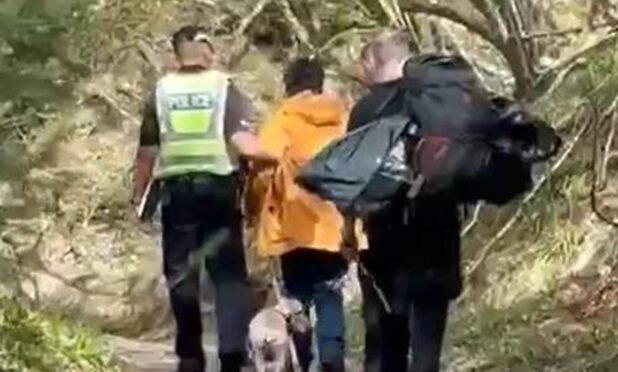A memorial could be built using timber from one of Britain’s tallest trees, which was recently toppled during storm-force gales.
The famous Hermitage Douglas Fir at Dunkeld was brought crashing down last week, smashing through its own information board.
The towering giant stood at just over 211ft, making it the third largest tree in Britain and one of the biggest draws at the Hermitage beauty spot, just off the A9.
Now rangers are trying to decide what to do with the fallen fir, one of the “young giants of the Hermitage”.
A spokeswoman for the Perth and Kinross Countryside Trust said: “We are working collaboratively with the The National Trust for Scotland and Forestry Commission Scotland to figure out how to recover the tree from its position straddling the River Braan, as well as the best use for the timber.
“At the moment discussions are taking place about the possibility of utilising some of the timber to produce a piece in memory of the magnificent tree and siting it at the Hermitage.”
The self-sown tree sat in the wild tree garden created by the Dukes of Atholl in the 18th century.
Trust manager Morag Watson said: “This Douglas Fir was a magnificent tree and an important specimen within Big Tree Country and the garden created by the ‘Planting Dukes’ at The Hermitage.
“It had survived remarkably well and achieved an outstanding height, given its location on a very rocky site and shallow root system, and will be a great loss to Perthshire.”
Regular visitors to the Hermitage expressed their feelings about the “sad loss” of the tree on social media describing it as “the end of an era”.
While the memorial idea has been welcomed, some people have called for the tree to be left in its final resting place.
According to the Forestry Commission Scotland, a Douglas fir in Reelig Glen, near Inverness, is Britain’s tallest tree at 217ft. The fir is also the tallest conifer in Europe.
Meanwhile, Perthshire rangers are still reeling from last month’s theft of a clutch of “priceless” trees from the Kinnoull Hill conservation zone.
According to Forest Enterprise Scotland, the stolen Serbian spruces have no commercial value but contain genetic material essential to the long-term conservation of the species.










